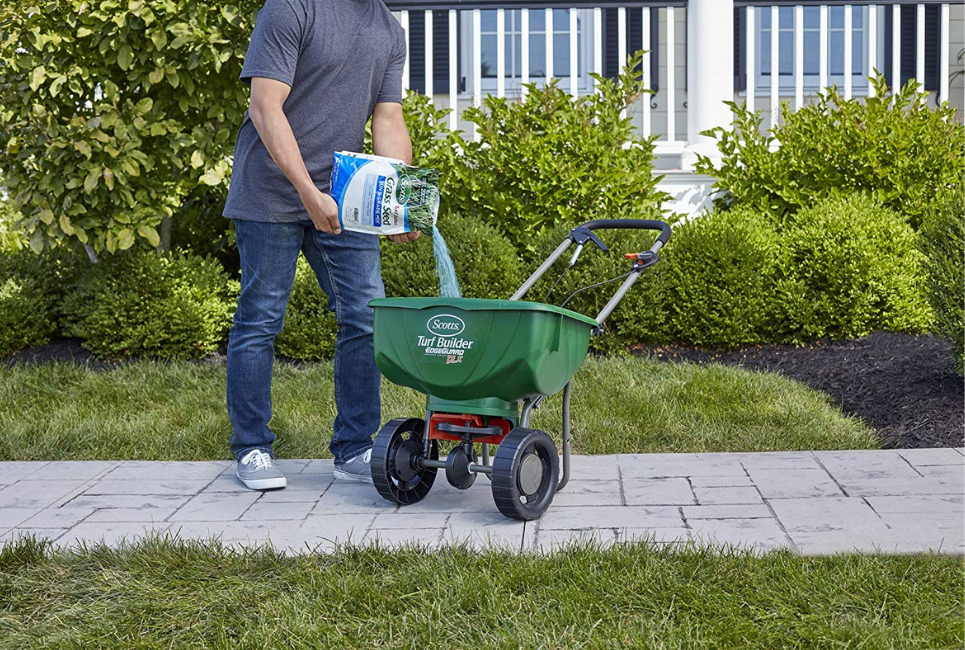- Popular Types of Bermuda Grass Explained - April 21, 2022
- When to Mow New Grass - April 18, 2022
- Best Troy Bilt Push Mower: How to Find The Right One - April 25, 2021
This write-up favors you if you want to discover the best grass seed for Maryland. Maryland is a state in the US that has favorable conditions to tolerate different grass seed types to improve your lawn for both ornamental and commercial purposes.
One can plant either cool or warm season grass seed, depending on the region and climate. One challenge is to understand particular genetic characteristics that can sustain your lawn. Well, that is precisely our intention; to inform and let you make a sound decision.
Most of our products on our list are native to Asia and Europe. That said, after extensive research, we found them suiting particular regions in Maryland. Let’s dig in.
Factors to Consider When Buying Best Grass Seed for Maryland
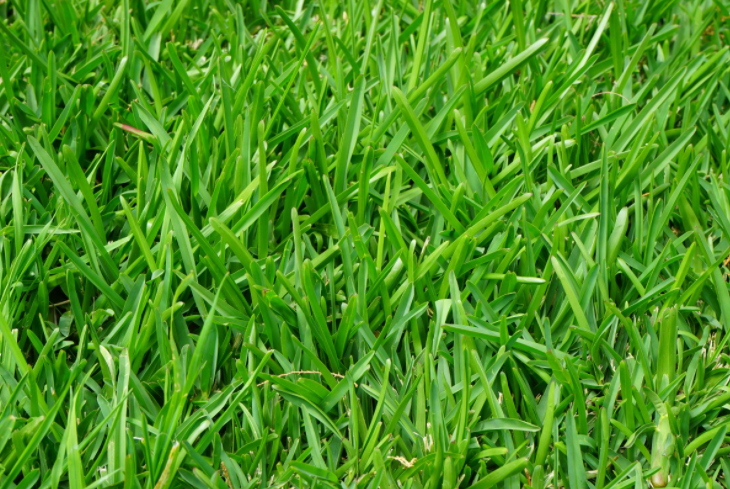
Growing a coveted lawn is always a challenge to many homeowners. You need prerequisite considerations to make your luxurious green bed to thrive in the desired environment.
The smartest way to build a lawn is to select the grass seed carefully. Since there are different varieties and seeds for your lawn. Ensure that you use the right pick. Worry not; we cannot pose a challenge to you without providing the right tips to ensure you get the correct seeds.
Well, put the following aspects into consideration:
Climate
You must use the right seeds that entertain your regional weather and climate. For example, if it is a warm region, then it is reasonable to plant warm-season grass seeds. For this article, we narrowed warm-season grass seed to Zoysia and Bermuda.
On the other hand, if the climate is cold, Perennial Ryegrass or Fine Fescue could work well for you. Assess your climate to determine if it would make sense to plant warm or cold season seeds.
Region
It will be unfair to fight nature when it comes to gardening. The best practice is to embrace nature and determine the right grass seed option to flourish in your region. Maryland has different regions that support either warm or cold season grass well.
It is essential to understand your growing zone and establish the correct seed that can perform adequately. These grasses have particular genetic attributes that can withstand specific environmental challenges. Some can tolerate heat, while others can survive snow and frost.
While choosing a particular region, some may encompass multiple states. Isolating a particular region requires looking beyond your map. Getting a soil test gives you a hint of the right grass to plant.
Purpose and Function
You must understand those compelling reasons that cause you to plant individual grass seeds. Some reasons may just be ornamental. Before planting, understand if there will be a lot of physical activities or foot traffic.
Again, know the condition of your soil. Is it sandy, loamy, or silty? Furthermore, know if the lawn is in full shade or sunlight. Plus, know the average natural rainfall your lawn receives monthly.
As you determine your lawn qualities, start to narrow them down to varieties that can meet your purpose. For instance, Fine Fescue Grass requires plenty of shade, little fertilizer, and tolerates low temperatures.
Quality
Different grasses come in varying qualities. Avoid the temptation of those grass seeds which promote a ‘high quality ‘label while not matching the hype. One can avoid buying such a blend that comes with an empty filter by gauging it on the following points.
- Seed germination should be more than 80%
- The package should have less than 0.5 % weed seeds.
- Noxious weeds should be 0% since they are intolerable.
If unsure, you must involve an expert who understands the genetic traits of particular seeds that can perform well on your lawn.
6 Best Grass Seed for Maryland
Maryland State is ripe for entertaining different types of grass seeds for both cold and warm seasons. As a consumer, finding a perfect seed type that flourishes in your garden is what you desire, right? Here are our top picks, which we find them being resourceful to you. Let’s analyze them keenly.
Zoysia Grass Seed
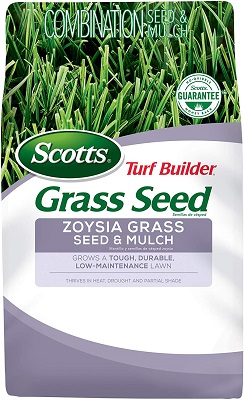
Zoysia grass seed is a warm-season plant with some aspects of cold-weather tolerance. This grass type can withstand drought, heat, and heavy foot damages without damaging easily. Native to Asia, it has accessed the US since 1895.
On the face of it, Zoysia grass is dark green, fine-textured, and lush. It establishes slowly to form a dense carpet. It is a tough grass that forms a beautiful lawn giving it an elegant look. The lawn is thick enough, making it difficult for the weed to penetrate.
When underactive growth in the early stages, it stays light to medium green. However, as winter sets in, it turns brownish. Some homeowners overseed it with cool, seasoned Ryegrass to achieve a green color during winter.
Naturally, this grass develops deep root systems making it to conserve moisture and resist drought. Zoysia remains green during short drought episodes. Undoubtedly, it goes dormant as heat and drought persist. One can water it to make it green up evenly.
Typically, Zoysia prefers full sun and can tolerate light shade. Furthermore, the lawn requires 1 inch of rainfall or somewhat weekly irrigation. One should mow this slow-growing grass to retain a recommended height of one and a half inches.
One can plant this grass in 5.8 to 7.0 PH soils. Not to forget, you can perform a soil test to establish if your lawn needs lime to restore a PH balance.
Lastly, this seed grass can be an excellent choice for athletic fields, golf courses, parks, and home lawns. See how Zoysia compares to Bermuda grass here.
Pros
- It is a warm seasoned grass with unrivaled cold tolerance
- The grass requires low maintenance and water requirements
- Forms thick dense cover which is traffic-tolerant
- Zoysia grass can tolerate drought and heat
- The grass is ideal for southern and transition zones in the US
Cons
- It turns brown in winter
Kentucky Bluegrass
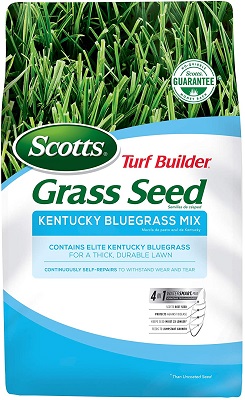
Do you desire to have a dense, durable, and lush lawn in Maryland? Well, your answer lies in Kentucky bluegrass when exposed to proper care and with suitable growing conditions. Notably, this grass seed requires a high maintenance level to acquire the best results.
Kentucky bluegrass originates from Asia and Europe, which first landed in the US as a pasture grass. Being a perennial cool-season grass, it grows in the cool climates vigorously. More importantly, Kentucky grass has relatively shallow roots leading to lower drought and heat tolerances.
This grass seed establishes the seed quickly, but the process of germination is slow. One remarkable feature is that it is a sod-forming and self-spreading grass. During establishment, it spreads through underground stems (rhizomes) to form a thick and dense turf. As such, this grass can recuperate from damage quickly.
A healthy Kentucky bluegrass has a charming emerald to blue-green color. Additionally, it has a fine texture making it comfortable on bare feet. During a hot season, Kentucky bluegrass has a slow growth rate. Furthermore, it becomes dormant when subjected to drought and extreme heat. You can use irrigation to return it to normalcy.
Full sun is a preferable condition for a healthy Kentucky bluegrass lawn. The right timing for planting it is during early fall. Its unique rhizomatous growth makes grass thatch easily, which shields it from drought stress and diseases.
You can mow this cool-season grass to between 2 inches high. However, one can maintain a height of 3 to 4 inches during lower rainfall and high heat periods. Optimal soil PH should range between 5.8 and 7.0. Perform routine soil testing after three years to maintain a required PH balance.
Pros
- Kentucky bluegrass has excellent winter hardiness
- Its varieties are susceptible to drought and heat
- The grass forms a durable, lush, and dense lawn
- It has a charming blue-green color that gives it an elegant look
- It has a fine texture which is friendly to bare feet
Cons
- The grass requires a high level of maintenance
Fine Fescue
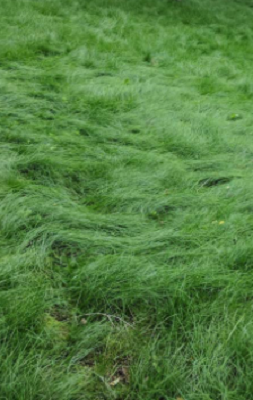
One can revive the hope of having a dense lawn by planting this Fine Fescue grass seed. Fescue grass has five species that come in a blended seed mix to achieve better turf vigor.
Such grass is perfect for cooler and temperate regions. Most of the species clumps and forms tufts. Later, they spread via rhizomes. This variety has fine texture leaves whose color is medium to blue-green. Such leaves have a superior performance in shade locations.
Fine Fescue grass germinates and establishes readily and quickly. You can plant it in clay, sand, and rock soil conditions. One key drawback concerning this plant is it performs poorly in high traffic areas.
Fine Fescue is not ideal for grazing situations, but it can make an attractive lawn. Since it has a good shade tolerance, it grows well in numerous trees and still makes a thick and vigorous turf. Notably, it becomes dormant during summer when temperatures are above 32 degrees Celsius.
Besides, this grass requires a soil PH of 5.0 to 6.5. One can prepare the bed before seeding or laying sod. Fine Fescue blend performs well in standard home landscapes. However, the blends are not suitable for heavily trafficked areas.
One distinctive feature about this grass seed is it has tolerance for low mowing. Although it has low irrigation needs, the establishment needs consistent moisture. Also, this grass tolerates low fertility conditions. Remember, it can brown without a nitrogen supplement.
Proper care requires springtime fertilizing plus an early summer feed for strong roots and color. Interestingly, the Fine Fescue grass seed does not need a pesticide since most insects do not cause any damage. It goes without mentioning that fungal infections are more in high moisture and coastal regions.
Pros
- The grass seed has exceptional performance in shade regions
- Quick establishment and germination from a dense turf
- Fine Fescue requires low mowing and irrigation needs
- One can plant it in low fertility conditions
- Maintenance and care does not require a pesticide
Cons
- It shows poor performance in high traffic areas.
Perennial Ryegrass
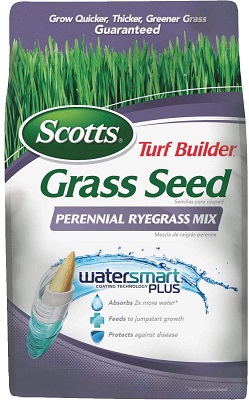
Perennial Ryegrass can be a valuable component in temporary and permanent lawns as it forms quick establishment and a fast germination rate. When exposed to proper growing conditions, it forms a lush and fine-bladed lawn that retains color in winter.
Many people use Perennial Ryegrass as pasture grass. Since it is a short-lived grass, it offers short term erosion control to ensure soil stability. Also, it is a cool-season grass, hence its peak growth is in cold weather. It also flourishes well in moderate summer.
Unlike other grasses, Perennial Ryegrass spreads to form bunches. It grows in clumps and spreads via vertical shoots (tillers). These tillers are horizontal above-ground stems with shallow roots. As such, these roots limit their tolerance for drought and heat.
Lately, there have emerged improved varieties that happen to have more incredible drought and heat tolerance. Furthermore, these blends form lush and traffic tolerant turf that needs less water yearly. Still, such varieties require less mowing.
Perennial Ryegrass is a major component in the athletic field and transition zone lawns. Rapid seedling growth and fast germination provide it with stability and quick color. It prefers sun, although it can tolerate shaded conditions lightly.
One can plant this cool-season grass in the fall as cool temperatures complement natural growth. However, you need to follow monthly lawn care.
Mow it to retain a recommended height of two and a half inches. This grass can grow well in high water and fertilizer needs. When there are low rainfall and high heat, one should result in irrigation to maintain its color. Alternatively, you can overseed your lawn to deal with a prolonged drought.
Perennial Ryegrass is a versatile grass that requires both alkaline and acidic soils. Optimally, it prefers a PH of 5.5 to 7.0. Perform a soil test every four years to keep soil nutrients and PH at optimal levels.
Pros
- It is a cool seasoned grass that withstands light shade
- The grass features fast germination and seedling growth
- It can grow in alkaline and acidic soils optimally
- Ideal for temporary and permanent lawns
- Good cold tolerance
Cons
- It has a low tolerance to heat and drought
Bermuda Grass
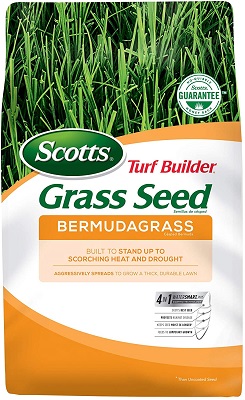
Bermuda grass can be a leading choice for you, thanks to its toughness and resilience. Many lawnmowers value Bermuda grass due to its exceptional drought and heat tolerance. Recuperation is quick with a high capacity to withstand heavy use.
This grass is native to subtropical and tropical regions around the world. Being a warm-season grass, it grows during late spring and hot summer actively. Notably, it is more sensitive to cold temperatures making it a cold-tolerant grass.
Another useful feature about Bermuda grass is it flourishes in good drainage and direct sunlight sites. Furthermore, these grass types have high tolerances to salt, heat, drought, and humidity. Its roots can attain a 6 feet depth to provide resilience against environmental stress.
The fastest growth rate is what defines this grass. It spreads by below stem grounds (rhizomes) and above ground stems (stolons). Such an aggressive growth rate enables it to contain heavy use. Since it recuperates from damage quickly, it is perfect for the golf course and athletics fields.
Bermuda grass stays green in frost-free winter. It is noteworthy that it goes dormant and changes to brown as winter persists. Alternatively, you can overseed the lawn with Ryegrass to ensure green color in winter.
Another exciting feature is Bermuda grass is self-repairing, wear-resistant, and self-spreading. For fast and effective results, you can combine it with professional-grade fertilizer. It requires more maintenance since it is an aggressive grass.
One can mow it twice per week during peak growth. The recommended height is one and a half inches for home lawns. Although this grass has some drought tolerance, it can go dormant as drought prolongs. One can supplement it with irrigation to overcome summer dormancy. Bermuda grass withstands alkaline conditions by entertaining a soil PH of 5.8 and 7.0.
Pros
- It is drought, heat, and salt-tolerant
- Superior growth rate to form a dense turf
- It is self-repairing and wear-resistant
- Flourishes well in well-drained soil with direct sunlight
- Can tolerate more alkaline conditions
Cons
- Requires high maintenance and nutrients
Garland Grass Seed Mix
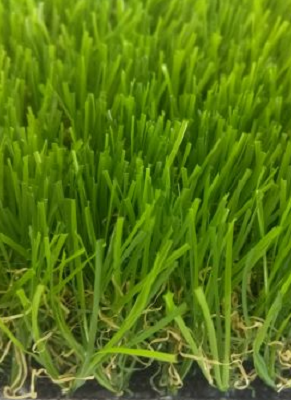
Garland is a combination of 30% shade and drought tolerant Fine Fescue and 70% Perennial Ryegrass Seed. Such a mixture can recover from the high stress of drought and heat quickly. Fine Fescue adds to dark green color and high traffic tolerance.
One can apply this Garland grass seed in parks, lawns, fairways, golf courses, and athletic fields. This mixture is convenient as it promotes high insect and disease resistance. Furthermore, this combination produces fine leaf texture and durability in both sun and shade areas.
One desirable quality about this blend is the ability to creep via underground shoots. As such, it becomes useful in repairing damaged areas. Moreover, it results in a beautiful green shade that can maintain color without additional fertilizer.
One can plant this Garland grass seed mix when the soil temperature is 55 degrees Fahrenheit in spring. Timing is vital as it has to be at least eight weeks before frost in fall.
When operating in new turf, you can sow 6 to 8 pounds of such seeds in 1000 square feet. Or, you can use a broadcasting method to sow 320 pounds in an acre. Still, one can use 3 to 4 pounds to oversee 1000 square feet. Concerning the broadcasting method, you can 160 pounds to oversee an acre.
With outstanding growth characteristics, this seed mixture operates well in a 7.0 PH soil. One can still grow it in both warm and cold conditions. You can still supplement this grass with irrigation to attain the optimum level of moisture to grow well.
Pros
- It offers high stress and drought resistance
- Remarkable traffic tolerance
- High insect and disease resistance
- Creeps to repair damaged areas
- Excellent mowing qualities
Cons
- It requires high maintenance standards
FAQs
Answer: It should be from mid-August to mid-October. In other words, let it be between late summer to early fall. Such can be ideal for cool-season seeds. However, warm-season seeds are suitable in late spring into summer. Suppose autumn leaf drop becomes a concern, then perform seeding in August or early September.
Answer: One should avoid putting seed and fertilizer together when seeding a lawn. If you do so, then your lawn is likely to have patches. Or, excess fertilizer can burn seeds and cause uneven distribution of grass. You can spread fertilizer before planting the grass seed.
Answer: Indeed yes. However, one must ensure that there is good lawn care. One can only get better results by performing acceptable lawn preparation practices before throwing those seeds on the ground.
Answer: One can involve a rake to level the topsoil. Raking leaves behind furrows in the soil for seeds to settle in properly. Most importantly, you can mix lawn seeds with organic lawn food as nutrients to thrive well.
In Summary
Grass plays a critical role in the beautification of the landscape of Maryland State. Grass provides a correct image in parks, golf courses, home landscapes, roads, and more.
Suppose your lawn is in Maryland State, it makes sense to use the right grass seed type to actualize your vision. Having a thorough knowledge of grass seed characteristics makes your choice easy and relevant.
Your solution lies in our six products as listed above to meet your lawn needs. Some flourish well in cold season regions, while others support warm-season places. You can still use a blend to supplement each other for better results.
Making the right decision is what is holding you. Overcome such a challenge by utilizing our advice in this piece.
Read more about finding the best grass seed if you live in:

